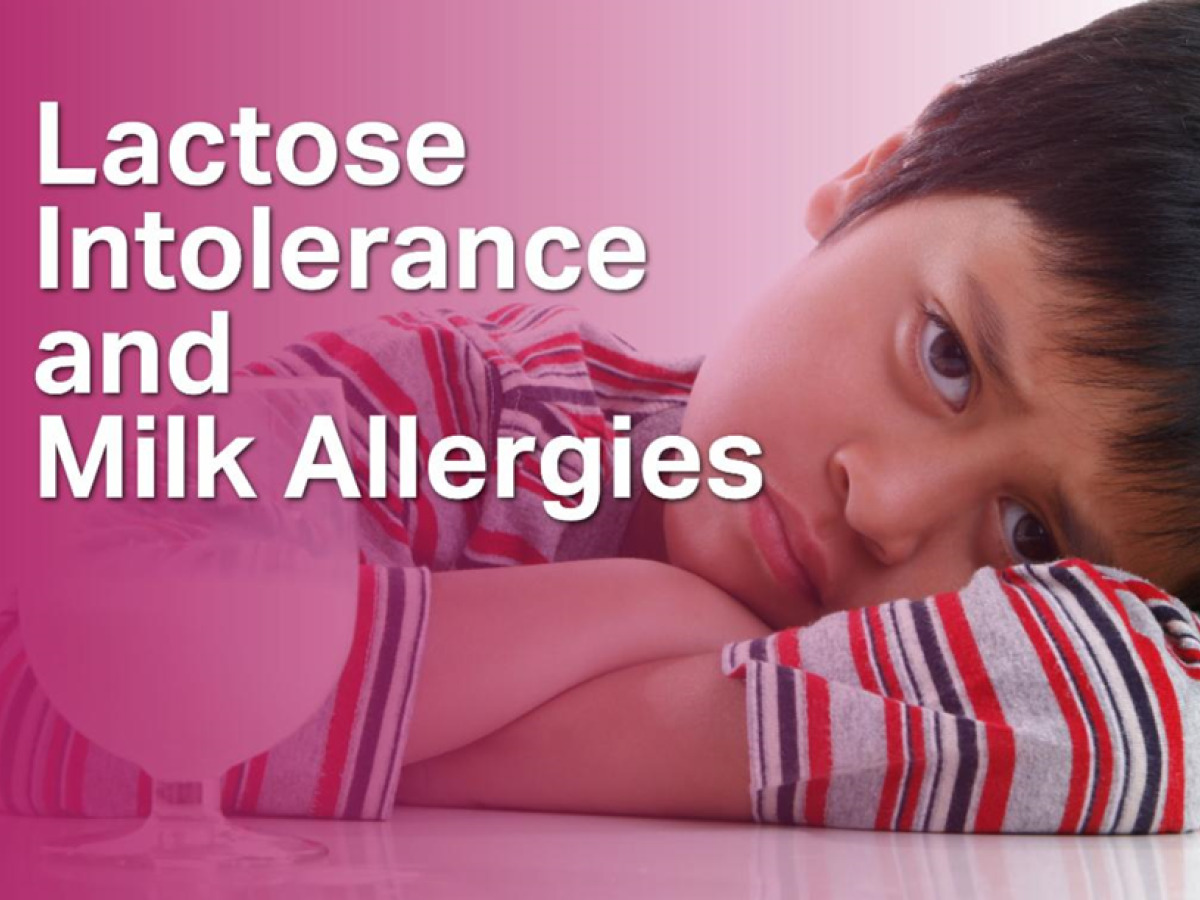Lactose Intolerance and Milk Allergies
Institute of Child Nutrition (ICN)
September 10, 2024

Do you have children in your program who can’t drink milk? While the reasons a child cannot drink milk may vary, it is important to properly accommodate the child’s diet while participating in the Child and Adult Care Food Program (CACFP). The Institute of Child Nutrition’s Mealtime Memo explains the difference between lactose intolerance and a milk allergy and discuss how to accommodate children with these disabilities.
Milk Allergy Versus Lactose Intolerance
Milk allergy is when your immune system reacts to the proteins in cow’s milk or milk products and triggers an allergic reaction. Symptoms can range from mild to severe. A milk allergy can be potentially life-threatening.
Lactose intolerance does not involve the immune system. People who are lactose intolerant are missing the enzyme lactase, which is needed to break down lactose - a naturally occurring sugar in milk and dairy products. As a result, people with lactose intolerance are unable to digest these foods. While lactose intolerance can cause discomfort, it is not life threatening.
Below is a summary of the differences between a milk allergy and lactose intolerance.
Milk Allergy
Cause: An immune system response to milk proteins that causes an allergic reaction
Signs and Symptoms:
- Hives, swelling of face, lips, tongue
- Itching or tingling around the mouth
- Chest tightness
- Wheezing, coughing
- Shortness of breath, throat tightness, trouble swallowing
- Nasal congestion
- Nausea, vomiting
- Abdominal cramps, diarrhea
- Anxiety, headache, confusion
- Loss of consciousness
Life-threatening: possibly
Lactose Intolerance
Cause: Lack of lactase enzyme to break down lactose; unable to digest milk and dairy
Signs and Symptoms:
- Gas
- Bloating
- Abdominal cramps
- Nausea
- Diarrhea
Foods to Avoid
Avoid foods that contain milk or milk ingredients such as:
- Milk
- Yogurt
- Cheese
- Butter
Some nondairy products and processed foods, such as baked goods, cereals, and luncheon meats may contain dairy ingredients and forms of milk proteins (i.e., casein and whey). Always read labels to find these hidden ingredients. Milk is required to be listed as an allergen on food packages, making it easier to see if it is present in a food.
Some children with lactose intolerance may not be able to drink fluid milk but may be able to tolerate other dairy products such as yogurt or cheese. Check the medical statement from the State-licensed healthcare professional for a list of foods to avoid. Also, maintain open communication with the child’s caregivers about foods to avoid.
Alternatives to Milk
Providing meal modifications for children with lactose intolerance or a milk allergy may seem overwhelming, but with some adjustments, children can still participate in the CACFP.
Creditable Milk Substitutes
Many nondairy beverages may be served in place of cow’s milk. For milk substitutes to be creditable, they must be nutritionally equivalent to cow’s milk and provide specific nutrients determined by USDA. The required nutrient levels are listed in the USDA’s Crediting Fluid Milk Tip Sheet.
- Soy Milk: Many kinds of soy milk are nutritionally equivalent to cow’s milk and are creditable. Check with your State agency or sponsoring organization to identify creditable soy milk brands. Be mindful that soy is also a major allergen.
- Lactose-Free Milk: Lactose-free milk is creditable in the CACFP and can be served to children with lactose intolerance. Do not serve lactose-free milk to children with a milk allergy, as it still contains milk proteins that could cause an allergic reaction.
Please note that goat’s milk proteins are similar to cow’s milk proteins and may cause a reaction in milk-allergic individuals. It is not a safe alternative.
If a family requests a creditable milk substitute be served to their child, they must submit the request in writing.
Must milk substitutes be unflavored?
Yes. Milk substitutes, including nondairy beverages and lactose-free milk, served to children 1 through 5 years of age must be unflavored.
Must milk substitutes meet the CACFP fat content requirements?
- Lactose-free milk is required to follow fat content limits for milk. Lactose-free whole milk must be served to children 12-23 months old. Lactose-free low-fat (1%) or fat free (skim) milk must be served to children 2 years and older.
- Nondairy beverages are not required to follow fat content limits for milk. They do not need to be low-fat or fat-free when served to children 2 years and older.
Non creditable Milk Substitutes
Nondairy beverages made with nuts (e.g., almond, cashew), rice, oats, or coconuts often contain little or no protein and are not nutritionally equivalent to cow’s milk. Therefore, they are not a creditable replacement for milk.
noncredit able beverages that do not meet or exceed the nutrient requirements of cow’s milk may only be served as a milk substitute with a medical statement on file. The statement must be signed by a State-licensed healthcare professional (individual authorized to write medical prescriptions under State law), such as a licensed physician.
Accommodating Children on the CACFP
Providing Milk Substitutes WITH a Medical Statement
If a child has a medical need for a milk substitute, the child care program is required to supply the replacement. Programs are not required to provide the exact substitution requested (i.e., specific name brand); however, they must work with the family to determine a reasonable modification that effectively accommodates the child.
Providing Milk Substitutes WITHOUT a Medical Statement
Child care programs may choose to accommodate modifications without a signed medical statement if the milk substitute meets the meal pattern requirements (lactose-free milk or creditable soy milk). However, child care programs are strongly encouraged to meet these requested special dietary needs. If the family provides the milk substitute, it must be creditable (lactose-free milk or creditable soy milk).
For more information read ICN’s September Mealtime Memo.
